Monaco is the place where yachtsmanship and money combine in an intoxicating and irresistible blend. Millie Walton is charmed by the sailors and owner of Maserati’s record-breaking yacht
The crew of the 70ft Maserati Yacht VOR70 are sitting around a table at Bistrot Le Bouchon, one of Monaco’s more understated restaurants. They have just sailed in from Barcelona and are sporting bodily evidence of the journey – a torn-off fingernail here, a badly swollen wrist there. But they speak with excitement about the boat’s ambitious 2015 racing programme, which culminates in the infamously challenging Rolex Sydney–Hobart Yacht Race, between mainland Australia and Tasmania.
Our dinner is an intimate introduction to the team before the main celebratory event, an uber-powerful affair featuring the crew of the yacht, the owner of Fiat, Maserati and Ferrari (the companies that is, not just single cars: that would be unexceptional in Monte Carlo), and one of Monaco’s royals – but more on that in a moment.
The crew are a fresh-faced gang from all across the globe: Andreas Axelsson (Sweden), Guido Broggi (Italy), Andrea Fantini (Italy), Oliver Herrera Perez (Canary Islands), Boris Herrman (Germany), Francesco Malingri (Italy), Gwen Riou (France), Corrado Rossignoli (Italy) – all picked for their expertise by Milan-born skipper Giovanni Soldini. The next 12 months will be a series of record attempts, including the San Francisco–Shanghai sprint in May, which retraces the 7,000-mile route across the Pacific Ocean used by the legendary clippers in the mid-19th century – there’s no room for error.
Soldini himself sits quietly in the midst, his salted black hair and sun-burnished skin betraying his extensive experience at sea, which includes two single-handed round-the-world races, one of which he won in remarkable fashion after making a diversion to save fellow competitor, Isabelle Autissier, who had capsized in the dangerously freezing waters. He was later awarded the Legion d’Honneur in Paris and the Medal of Honour in Rome. In total, he boasts more than 40 ocean crossings and is one of the few allowed to wear a gold ring in his left ear – a privilege granted only to sailors who have rounded Cape Horn, the southern-most tip of America.
At the event the next day, Pierre Casiraghi, the youngest son of Caroline, the daughter of Monaco’s late long-time ruler Prince Rainer and his wife Princess Grace, holds forth. Pierre’s father is the late Stefano Casiraghi, who was tragically killed, aged just 30, when his powerboat overturned during a race on the French Riviera in 1990. Despite this, Pierre is clearly unfazed about taking to high-level water sport, having already had a successful on-board experience in the Cape2Rio race last year. He marvels at his captain’s ability to maximize each of his crew’s individual talents: “He’s a very kind and generous man. He makes everything seem so fluid”.
The boat’s owner is John Elkann, chairman of Fiat Chrysler Automobiles, an empire which also encompasses Maserati and Ferrari. Elkann, who has just arrived from London, is smartly dressed in a blue suit with an eccentric bright orange waistcoat revealing his youthful approach to all things in life, not only business. He’s quietly spoken, giving an impression of humility, as he recounts the “unforgettable experience” of crossing the Atlantic from the Canaries to the Caribbean in 2009 with Soldini. He speaks of an irreplaceable bond with the crew, the type of which can only be formed through shared struggle and perseverance.
Together, they have come to be recognized as one of the world’s most successful and impassioned racing teams, extending Maserati’s market quite literally to further seas. “It’s an exciting and challenging year for the VOR70 and for Maserati,” explains Elkann. “After growing sixfold in terms of volume and luxury market coverage in the last two years, we will be looking to keep that momentum going, especially in the US and Asia.”
In keeping with its trident logo, most commonly associated with Neptune, the god of the sea, the Maserati yacht aesthetically evokes a sense of power and awe, fitting with Maserati’s reputation for exceptionally beautiful designs. The interiors of the monohull, however, tell a different story – one of hard work and competitive sportsmanship, with basic bunk beds, little to no lighting (it takes a sure-footed sailor indeed to navigate through the cubbyholes) and a very simplistic kitchen. No bathroom, no luxuries – a giant leap from the plush extravagance of the shining new Yacht Club de Monaco, where Maserati has an exclusive lounge space as the club’s official car. The challenging aspect of sailing though, Elkann explains, “perfectly expresses the values of passion, emotion and innovation that are intrinsic to Maserati”. Select customers can see this themselves on the unique Drive&Sail experience: sailing on the Maserati VOR70 with Soldini, and then driving the latest models in the Maserati range. Surf and turf indeed.
Strike a pose, there’s nothing to it – the market in photography is booming like never before, and even major museums, art institutions and auction houses want to get in on the action. Collectors take heed, says our columnist Jean-David Malat
The art market used to be very cautious about photography, but the tendency is now shifting – The Telegraph reported a 36 per cent increase of auction sales of photography in 2014. Slowly but steadily, the market and its collectors are opening up to fine art photography. On the one hand, this means that prices for artworks of this genre are going up and that we are witnessing auction records more and more regularly – how to forget Andreas Gursky’s Rhein II (1999), which became the most expensive photograph ever sold at auction when it reached $4.3 million at Christie’s New York in 2011? On the other hand, however, one notices that this young market is still relatively much more affordable than the market for fine art painting or sculpture, for example. This makes it a very attractive field, therefore, for the new collectors and art professionals, who observe a real desire for fine art photography internationally.
Reaffirming the market’s observations, major museums and trusted institutions have also been giving much more attention to the photographic genre, with large-scale exhibitions of historical and contemporary fine art photography. Founded in 1971 The Photographers’ Gallery underwent a major expansion in 2012, which made it the largest public gallery in London dedicated to photography. It focuses its activity on promoting emerging talents, conserving historical archives and exhibiting established photography artists.
This summer another landmark of the UK’s art and culture scene, London’s National Portrait Gallery, will launch an exhibition entirely devoted to photography of Audrey Hepburn. ‘Audrey Hepburn: Portraits of an Icon’ will feature a selection of more than 60 photographs, including classic and rarely seen prints by leading photographers such as Richard Avedon, Cecil Beaton, Terry O’Neill, Norman Parkinson and Irving Penn.
Responding to this tangible – even pressing – demand from collectors, Opera Gallery has historically supported contemporary photographers: Gérard Rancinan, Olivier Dassault, Fani Alireza and Zoé Flore among others. More recently, the gallery started working with major figures of the genre. In Monaco in 2013 we held an exhibition by Terry O’Neill, one of the world’s most collected photographers whose work hangs in national art galleries and private collections worldwide. Since 2014 we are also delighted to be able to offer works by David LaChapelle to our clients. Probably one of the most famous living photographers, LaChapelle has exceptional talent combining a unique hyper-realistic aesthetic with profound social messages. He is also very prominent for his striking and stylish portraits of celebrities, of course!
Alongside what one could call ‘traditional’ art photography, fashion photography has made an entrance and is demanding its letters of nobility. And collectors across the world are responding with eagerness and enthusiasm!
It is this realization that made us at Opera Gallery London decide to curate an exhibition of contemporary photography, shining a light on some of the most sought-after artists of the field. Titled ‘Raw Footage’, the exhibition focuses on fashion-turned-art photography as well as on celebrity portraiture, both of which are fascinating evidence of the evolution of our cultural history. We have sourced works by some of the hottest fashion photographers of the moment, such as Vincent Peters, Tony Kelly, Mario Testino, David LaChapelle, Gavin Bond, Greg Williams, Simon Emmett, Douglas Kirkland and, of course, UK sweetheart Rankin.
Through the selected works, we interrogate how fashion photographers and their collaborators – designers, stylists, models and viewers – participate in disseminating our culture and defining our aesthetics. Alongside them, we will feature other photography geniuses: Nicolas Guérin and his mesmerizing ‘Polaroid Dreams’ series; Paul Solomons who, although he comes from the fashion world, takes a very different approach to photography, working with repetition and pattern-making; and Gérard Rancinan, self-described “active witness” to humanity, who states he works against the obliteration of our collective memory. All of these fascinating and inspiring image- makers are being brought together to capture an image of our times and to shine a light on beauty and its unattainable status.
Beyond that, the exhibition will reaffirm our strong confidence in the burgeoning market of photography, as an art that is both affordable – an aspect that is especially attractive to new collectors – and also a rather safe and sound investment: ArtTactic reported in June 2014 that “the confidence in the Contemporary Photography market continues to improve with an increase of 10 per cent since December 2013, reaching the highest reading since March 2011”. And if a photograph is also depicting a scene, celebrity or subject you admire and can lose yourself in, then the investment is doubly positive: a financial placement as well as an emotional commitment.
Jean-David Malat is an art dealer and curator, and the director of London’s Opera Gallery. operagallery.com
Presiding over a global restaurant empire, spanning Bahrain to Boston, Wolfgang Puck is one of the world’s most celebrated chefs. He speaks to Alice Clarke about food, family, canned pineapple and Coco Chanel

Top Tables
Wolfgang Puck’s restaurants include Hotel Bel-Air in Los Angeles (above), and CUT at 45 Park Lane, London
Alice Clarke: Did you love cooking as a child?
Wolfgang Puck: My mother was a chef and I helped her to cook at home. I loved pastries and sweets more than anything back then. When I was 14 I left home to start an apprenticeship with a chef 50 miles away. That was a long way and it was hard when you had to work on the weekend and all your friends were playing or going skiing. It was only when I went to France that I realized that this is what I wanted to do. I was working in a restaurant in Provence called L’Oustau de Baumanière, which had three Michelin stars and was run by the legendary Raymond Thuilier.
AC: Do you look back and think of Thuilier as your mentor?
WP: Yes, he was in a way. I remember when I came to Los Angeles with a friend who’d also worked there and we said, ‘OK, we’re going to open a restaurant like Baumanière’.
AC: It’s interesting to see how some chefs have been so influenced by those who they trained under.
WP: Well, I think you get into a certain style and if you’re happy with it, you don’t change. For me it was different – I always tried to experiment and do new things. That’s why I’ve been married three times! Just kidding… But with regards to restaurants, I was interested in so many different things. After I’d opened Spago [in West Hollywood in 1982] I didn’t want to open another branch next, that would be too boring. Instead, I wanted to have a Chinese restaurant, so I launched Chinois [in Santa Monica, 1983], which was the first Asian-American fusion restaurant. I didn’t even know how to make fried rice at the time but I said, ‘I’m going to learn my own way’.
AC: Is there one particular cuisine that you enjoy the most?
WP: I love spices, but I also love the simplicity of a restaurant like CUT [with branches in Beverly Hills, Las Vegas, London, Bahrain, Dubai and Singapore], where you know exactly what you’re getting and it’s the best quality. It’s almost like if you get a great dress and it fits perfectly, you don’t need too much jewellery. Or if you have great earrings, you don’t need a necklace or rings. Coco Chanel said that before you leave the house, you should take two things off; that way you’re going to look better. I think it’s the same with food. If we pair it down, make it more minimalistic, it’s often better.
AC: There seems to be a real movement towards organic, fresh, sustainable food at the moment. Are you on board with that?
WP: Well, I grew up on a farm in Austria, so when we had salad we got it from the garden, and if we had vegetable soup we picked some carrots, cauliflower, beans or whatever, cut them up and made soup. So for me, there has never been anything so new about that. What was exotic and interesting was canned pineapple. I remember the first time somebody bought me canned pineapple from Hawaii, I thought: ‘Wow that’s exotic, that’s amazing’. I opened it and ate it really slowly. When I was younger we went to the forest and picked raspberries, blueberries, blackberries and white strawberries. In early spring my mother planted radishes and things like that, so by Easter we had the first fresh salad. Now all of a sudden in America everyone talks about ‘from farm to table’. I’ve never known anything different!

Fresh Start: Proving breakfast is the most important meal of the day, CUT is also a top spot for brunch
AC: Do you cook to relax?
WP: Oh yes. When I tell people I cook at home they say, ‘What do you mean? Don’t you already do enough?’ But I really like it. My children love it, too. My nine-year-old loves food. If he doesn’t get out of bed, I tell him I’m going to make scrambled eggs without him. He jumps up, comes downstairs, breaks the eggs, and has to cook it with me.
AC: Are there any chefs at the moment who you are particularly impressed by?
WP: I think Grant Achatz is one of the most talented chefs in America. He makes his own thing, a little bit out there, but very interesting– like Heston [Blumenthal] with The Fat Duck.
AC: What is your latest cookbook about?
WP: Wolfgang Puck Makes it Healthy is about eating better and exercising. I go skiing with the likes of [downhill champion] Franz Klammer but for about nine years, even if we weren’t going fast, I had to keep stopping to breathe. Similarly, I was playing tennis in Maui, where it is quite hot and humid, and after about 10 minutes I had to sit down as I couldn’t breathe anymore. I thought to myself, ‘I have to change my lifestyle and also start to exercise and eat better’. This book is really a result of that.
AC: How do you get people to eat more healthily?
WP Even if you go to a cheap grocery store, that’s still better than buying canned or frozen food. We should say to ourselves, ‘Okay, I like rice, why don’t I buy brown rice’, which has more flavour and is better for you. And the same with pasta. Once you get used to eating wholewheat pasta, you realize it’s really tasty and all of a sudden you think regular pasta is bland. So little by little you can try things out and begin to understand what is good and not so good for you. I also think that, in America especially, the portion sizes are too big. People think they have to eat a lot, but they don’t. In fact, they say you actually live longer if you eat less.
AC: You do a lot of charity work. Can you tell us about your philanthropic endeavours?
WP:In 1982 we started to do events with some chefs and wineries, so we called it The American Food and Wine Festival. We donated the money raised to ‘meals on wheels’, which provides food for old people, for people who don’t have any money and so on. We then started a cancer benefit for people who can’t go to hospital for treatment. We do a big event in Las Vegas for Alzheimer’s sufferers, because my mother had Alzheimer’s. We also do a big event in Cleveland for children at a cancer clinic there, too. We do a lot of work with schools, plus my wife has an orphanage accommodating 700 children in Ethiopia. So that alone is quite a lot of work!

Shooting Stars: Spago in Beverley Hills is one of only three restaurants in LA to hold two Michelin stars
AC:Do you find it hard to juggle everything?
WP:Sometimes, yes, it’s complicated and difficult. I have very good people who have worked with me for a long time though, so that helps.
AC: What has been your favourite meal recently?
WP: I had dinner last night at Alain Ducasse’s latest restaurant at the Plaza Athénée in Paris. I liked it a lot because it was so different; it was a really interesting experience. Sometimes the whole experience is better than each dish. I told them I only had one hour and they served me 10 different dishes. Three-star fast food!
AC: Your first restaurant, Spago, opened in 1982. Do you still feel as inspired by food today as you were back then?
WP Oh yes, I still love it just as much. If not, I wouldn’t be here.
Léa Seydoux, the French star who’s conquered Hollywood and is the new face of Prada Candy, speaks to Caroline Davies about childhood, perfume and Nietzsche
Serious yet joyful, sleek yet dishevelled, Léa Seydoux is an elegant enigma. The actor is one of only three women to have won a Palme d’Or, has just been announced as the next Bond girl and is also the face of Prada Candy perfumes. Following the recent launch of the third fragrance in the series, Prada Candy Florale, and ahead of her role in 2015’s dystopian love story The Lobster, alongside Colin Farrell and Rachel Weisz, Seydoux spoke to us about her journey to the silver screen.
LUX: Were you a quiet child? Was acting an obvious path?
Léa Seydoux: Absolutely! I was a quiet child, but that is precisely why I decided to be an actress. I wanted to counter my shyness. As a child, I dreamed that I would become an opera singer; I don’t think I was predestined to have a quiet life.
LUX: Do you put your past experiences into your performances?
LS: I’m convinced there are no rules to follow when becoming an actress. Every path is personal. Learning from our own story is quite logical, as we have to put a bit of our life into the character played. However, it’s not always enough. Role- playing also involves being able to imitate reality.
LUX: How has your character in the Candy adverts evolved?
LS: Candy’s evolution is linked to the evolution of the fragrance. She has always been a very colourful and original character; she’s a very impulsive young woman who does what she wants, when she wants. I think that in the first film, directed by Jean-Paul Goude, Candy was more spoilt and rebellious, but now she’s grown up a bit and is more rounded as a character. With Prada Candy Florale, there’s a greater sense of freedom, lightness and sensuality that comes across in a sophisticated manner.
LUX: You’ve said that you find it difficult to be light on screen. How do you find the lightness to play less tightly wound characters like Candy?
LS: Candy is bold and light at the same time. It’s the contradiction that I find deeply interesting. That is what I drew upon when embodying that character.
LUX: Why did you want to work with Prada on this campaign?
LS: Prada is a brand that I’m particularly fond of; I feel very close to the spirit of the House. It’s a very singular brand, and very audacious.
LUX: What is your current fragrance?
LS: Prada Candy, of course! I love wearing fragrances. I use many of them. In general, I look for perfumes with a strong personality and lots of originality.
LUX: Does the perfume remind you of anything?
LS: The first time I experienced Prada Candy Florale I was pleasantly surprised. You feel like you’re being taken on a voyage into a world of flowers, a world that is in full bloom in spring.
LUX: How do you prepare for a role? Do you prefer directors who take control or leave you to find your own path?
LS: I really appreciate stage directors who are always attentive to characters but, more broadly, I can’t say that there is one better way to guide actors. Generally, I prepare myself in different ways; it depends on the role I am playing.
LUX: How do you view Hollywood in comparison to French cinema?
LS: There is a real and deep cultural difference between Hollywood and French cinema. Hollywood cinema makes me think of great epic stories and entertainment, while French cinema is based much more on realistic and intimate stories. French people are at the origin of the auteur film industry. “ose very peculiar specificities make both Hollywood and French films unique and complementary.
LUX: How do you choose a script?
LS: For me, the director choice is crucial as he is going to lead everything.
LUX: What is the best piece of advice you have ever heard about life and about acting?
LS: “Become what you are” – Nietzsche. It is the best piece of advice for both life and acting. It means that you have to look for your talent and then continually improve it. We are constantly evolving and changes in our life have a real impact on how we are going to play a role and vice versa. Today, I’m not the same actress or woman that I was yesterday.
A ski-in, ski-out residence complete with Martini bar and pool sounds very Rocky Mountains, yet L’Amara is a spectacular addition to one of the most traditional skiing regions of France, as Darius Sanai discovers
How do you like to take your Alpine winter holiday? I suspect that cosmopolitan readers of LUX like to ski in the Alps, as well as put carbon fibre on snow in Colorado, Idaho and Hokkaido. There is something about the home of skiing, the crescent of mountains that rises out of the Mediterranean above Nice and sweeps through France, Switzerland, northern Italy and Austria before petering out, like the Turks, at the gates of Vienna, that is more concentrated, more alive with possibility and atmosphere, than anywhere else. The powder may be deeper in Niseko, the back country bigger in British Columbia, the whole experience more effortless in Aspen: but the Alps are where the story started, and where it evolved and continues to evolve. (Snowboarders have a different tale to tell, but not that many of you are boarders.)
If you are of one generation of wealth, you may stay in a hotel in St Moritz, Lech or Gstaad. Another, and you will be pounding the new hotels of Courchevel (see our helpful tongue- in-cheek guide at the end of this article). Or you may instead take over a whole chalet in Zermatt or Verbier. One rung down from the gourmet-catered chalets are the traditional French ski holiday chalets, cheerfully run by a chalet girl fresh out of British boarding school, happily burning the scrambled eggs and fighting off the advances of a soon-to-be-retired chartered surveyor from Surrey while his family occupies the Jacuzzi.
While there is no shortage of grand hotels, old and new, and chalets of every style, what the Alps have largely lacked is sophisticated, concierge-led residences in the American style, where you have a kitchen and living room, an in-residence pool, and a proper reception/bar/ restaurant downstairs, hotel-style. Until recently. L’Amara, one such development, opened last year to a considerable buzz in the French resort of Avoriaz. Avoriaz itself, located at a very high 1,800m on a mountainside above a deep valley, in which lies its mother resort of Morzine, has undergone something of a rebranding in recent years, shedding its 1960s middle-middle-class French bourgeoisie image and turning more contemporary and upmarket. L’Amara is in an extension of the main village, on a ledge overlooking Morzine (rather satisfying, if, as during our stay, there is deep snow all around but the grey of rain far down below).
When booking we did wonder whether being a) high on a ledge, and b) 500m from the main part of Avoriaz would be an issue, and this is a good demonstration of how even an enormous amount of online research can draw you to the wrong conclusion. L’Amara’s location, bordering the thick forest that plunged down the valley, was spectacular and felt exclusive. The walk to the village centre was panoramic, flat, and thrilling; even more so when my younger daughter decided that the wheelbarrows-on-skis that you can pick up and deposit back anywhere in the village would be an ideal mode of transportation: one daughter thus transported the other throughout the trip. (This would not work in a resort thick with teenage British partygoers, who would inevitably shove each other down the run leading down the ledge in an alcohol-fuelled daze, with predictably alarming consequences. Fortunately, Avoriaz is very upper-middle-class family, or was when we were there.)
L’Amara itself is genuinely ski-in, ski- out (unlike some places that dub themselves so): unless you execute a perfect stop, you will find yourself skiing into the ski room, and conversely you can launch yourself out in the morning like a racer from a downhill starting gate. The ski school assembly area, where I left the family every morning, is above the main village. On day one we walked, and felt rather laden down with skis, poles and rucksacks (the altitude doesn’t help). Day two saw us ski down out of the hotel to the bottom of the (easy) blue run, with the aim of taking the chairlift that would deposit us just above the ski school area; we were just patting ourselves on the back for working out this ruse when we were confronted by a 20-minute queue of several hundred other people who had the same idea. (In the resort’s defence, we were travelling on the busiest week of the year and this was the only lift with any kind of significant queue.) On day three we found the solution that we used for the rest of the week with joy: a horse-drawn sleigh taxi, which whooshed us up to the ski school in a cloud of hooves, powder and sleigh bells (to the children’s delight) in three short minutes, for a mere €10. Worth the money for the ride alone.
The skiing in Avoriaz is extensive but not very tall: there are no ultra-high lifts of the type you get in Zermatt or Chamonix. Double- diamond and power-hound experts would run out of thrills quite soon, I think, but for a skier like me (and I am possibly the most common type of lifelong skier) the selection of interesting reds and proper but not kamikaze blacks was varied enough to hold the attention for a week without getting too much déjà vu.
Avoriaz is in the middle of an interlinked region called the Portes du Soleil. It is not as logically and broadly linked as the Trois Vallées of Courchevel, Meribel and Val Thorens: you can choose to ski to Champéry in Switzerland or, in the other direction, to Châtel in France. The Châtel trip was a ski journey of the type I enjoy, but it took a bit of navigation with the map. A lift up, then down to a collation of restaurants in the next valley called Ardent; up another lift and down a pleasant red to another, bigger collation of restaurants called Les Lindarets in a confusingly similar-looking valley; then up two lifts to a high-ish station called Chesery, from which it would be easy to take the wrong piste and end up back in Les Lindarets.
From Chesery there was a long view down a new valley all the way to Lake Geneva. The most interesting run of all, a steep, straight and mogulled red through the trees (really a black), led down to the pretty, traditional village of Châtel. It felt strangely satisfying to know that to drive back to Avoriaz from here would take up to two hours, around the mountains, and I was planning to have a hot chocolate (laced with a little something) and admire my last run, when I realised that I would need to turn straight round and return if I weren’t to miss the last in the fiddly series of lifts to get back home. I had to positively will the chairlifts to go faster and ski like an impatient Italian instructor eager to get down to his first date with a blonde Swedish student. I still had my heart in my mouth as I did my last racing turn (or what I hoped was a racing turn) to meet the final lift: it closed at 4.15pm, my watch said 4.17pm and… it was still moving. I shot through the gate without slowing down and was whisked back up to safety.
The rest of the family had just as enjoyable, if rather less eventful, times and after years of staying at luxury hotels it was a curious relief to be back into our extensive den at L’Amara. I enjoyed cooking (shopping in French supermarkets is always a pleasure) and opening wine purchased from a wine shop, not a marked-up hotel restaurant (it’s the principle, not the price). And after a day of ski school/private lessons, nobody felt much like talking to more strangers in the form of waiters and the like.
L’Amara has been designed with great attention to detail: we liked the porthole window by the floor-to-ceiling balcony door, the wraparound balcony itself, and the extremely well-equipped kitchen (complete with oyster shuckers and other signs of entitled bourgeoisie). On two nights we ventured across the snowy courtyard to Le Grand Café, part of the same complex, a new-but-trad restaurant serving steak on hot stones, various fondues, and high-class thin, misshapen pizzas of the best kind. Neither hotel nor chalet, and rather better than both, residences like L’Amara have a bright future in the Alps – the best type of American import.
Crystal Holidays offer comprehensive luxury packages to L’Amara in Avoriaz. crystalski.co.uk
Controversy and chaos collide in the photography of Tierney Gearon, discovers Millie Walton. No wonder Charles Saatchi is a fan.
Tierney Gearon is hard to pin down. It takes a couple of weeks for me to catch her on the phone from her home in Los Angeles, and even then it’s only for a few minutes, as she’s “arrived at a friend’s house and doesn’t want to look rude”. I shouldn’t be surprised; she is one of the world’s most sought-after photographers. Yet despite the fact that she’s balancing two jobs as an artist and mother, she’s more than willing to talk and welcome me into her world. There’s a familiarity to her, even though we’ve never spoken before, and her answers feel genuine and unrehearsed.
The way she puts it, she sort of stumbled into photography. Born in Georgia, initially she was a ballet dancer “and then I cut my hair and became a model. While I was modelling and travelling around the world, I kept a Polaroid diary of everything I did. One of my agents saw the Polaroids I’d taken of the other models and said, ‘Oh my god, you’re an incredible photographer!’ That’s basically how I broke into fashion photography.” There’s a pause as she’s seen something she needs to take a photo of – a little girl playing with her mum. “Give me two seconds.” Despite this little interlude, Tierney doesn’t usually carry her camera around with her. She finds it “far too intense”, preferring instead to allocate dedicated work trips.

Pushing the Boundaries
Gearon’s ‘Colorshape’ series explores the idea of putting someone in a box, literally and metaphorically
She’s back, slightly out of breath and laughing. “Sorry about that! Where was I? When I got married I put my photography aside for a while to concentrate on having children and being a mum,” she continues. “When I started having marital problems aged 38 I needed to find myself again, so I started photographing my family in a new, artistic way. I’m one of those people who believe that you should just follow things in your path. You never know what’s going to happen.”
In 2001 Gearon’s photographs were showcased in the Saatchi Gallery in London – a huge achievement for a virtually unknown artist. However, the exhibition (‘I Am A Camera’), which included two photographs of her nude children (then aged four and six) caused public outrage, resulting in the near-seizure of her work under indecency laws. The abuse propelled at her by the media was particularly vicious – a News of the World review labelled the show “perversion under the guise of art”. She was, she says, “an innocent person who was simply trying to document” her life, but looking back on the controversy now Tierney appreciates how naïve she was to the art world. “When Charles Saatchi saw my work he knew that something would happen because of it,” she says. “Those were intended as light, funny images. To me, the darkness is in the eye of the beholder. If you see something dark that’s your issue, not mine.”
Did the incident cause her to reconsider her artwork? “It made me lose interest in the business of the art world itself,” she says. “I feel like a lot of galleries and people are just looking for sensation. Charles Saatchi is a master at advertising, creating sensation. Being a successful art director is an incredible gift and he is very talented. It’s great to have people like that appreciate your work, but at the same time one needs to be careful not to get caught up in the art world game.”
Perhaps that’s why Gearon’s images are so rooted within the domestic world. She works through an organic creative process, which naturally encourages people to use their imaginations. “Usually I direct organised chaos and interesting things happen within it,” she explains. “A lot of the time people don’t even know I’m taking their photograph.”
It’s that combination of reality paired with fantasy that makes her photographs so mesmerising. The worlds she depicts often have a way of inviting the viewer in while also evoking an atmosphere that’s punctuated by sadness or uncertainty. This is most obvious in ‘The Mother Project’, a series of photographs that explores Gearon’s relationship with her mentally ill mother. Despite the hardship that must have entailed, the artist looks back on her childhood fondly. “Both my parents gave me an enormous amount of love and allowed me to be an individual,” she recalls. “They gave me the space to be creative and to appreciate creativity.” It’s something she aims to allow her own children by encouraging them to collaborate with her on projects. Her most recent release, ‘Alphabet Book’ – “an art book for children and a children’s book for adults” – is the result of that collaboration and an enchanting example of what combined imaginations can produce.
Aside from being an outlet for creativity, I wonder why Gearon feels so compelled to photograph and what it is that she’s hoping to capture in her images. “My photography is like a diary of my soul,” she says. “Every single project I’ve done is a way of working through different issues in my life. My images tell a story, they provoke emotion and feelings.”
What’s the story behind her current series, ‘Colorshape’, I ask. “It’s about putting someone in a box. I wasn’t raised with a lot of boundaries, so by putting someone in a box I was also learning to contain myself.” One can’t help feeling that the project, like all of Gearon’s work, will keep going until she discovers exactly what it is she’s looking for. She admits to be being “a perfectionist” and says that “I may appear disorganised from the outside, but anyone that really knows me understands that even the chaos that sometimes surrounds me is an organised chaos.”
Organisation, it would seem, is the key to Gearon’s sense of stability. It’s a way of grounding herself and her children. “I have a very distracted personality and I create structure by creating a strong family home that feels safe for us,” she explains. “I don’t drink, smoke or do any drugs. We go on a lot of family trips and I have a huge support team, which includes my close friends and family.”
I wonder how her work has developed since becoming a mother. “All of my projects are from my heart and soul. I feel I have become more focused and more confident over the years. I live in the present, which keeps my work very current, but I don’t work every day so my work doesn’t consume me. My children consume me.”
We move on to talking about her relationship with her audience. With 54,000 followers on Instagram, it’s safe to say Gearon has a significant following who enjoy viewing her professional work as much as the “visually inspiring images” of her everyday life. “I’m not even sure who my audience is because I’ve never met them,” she muses. “But I feel that people who appreciate my work are people looking for something raw and individual, something very authentic. Because I share myself with people in my work, people reach out to me, they feel understood by me. Instagram has been very interesting because I am able to communicate directly with my audience and people can share with me, too.”
It’s a refreshing take on the social media craze that’s consuming our lives and expresses Gearon’s genuine lust for life. “As long as I love what I do I will continue to do what I do,” she says. “As soon as I lose interest or inspiration then I will move on to a different medium so my goal is to never stop finding inspirations and discovering new things.”
It seems a simple philosophy, but one that most of us could do with adopting ourselves. Our conversation ends, leaving me feeling uplifted and impassioned. In the world of Tierney Gearon, nothing is impossible.

Land Acquisition – Once the fragmented lands are connected, APR will provide overall wildlife management focus
Sean Gerrity has a vision, which he is rapidly turning into reality. Through the American Prairie Reserve, of which he is president, he is creating a wilderness reserve in North America to rival the Serengeti. Darius Sanai tells the story; and over the next pages, the images of the reserve in Montana tell their own
“In 10 to 15 years, you should see a slice of land extending 13,000 square kilometres here, the vast majority of that with no fences. There will be stunning variety of wildlife that has not been seen here for 150 years, but which was here for 1,000 years or more: thousands of bison, like the wildebeest in the Serengeti; cougars, wolves, grizzly bears in sustainable numbers. There will be all species of prey like elk and deer. It will be very easy to engage with this space: it will be a very wild place but with planned, controlled public access.”
Sean Gerrity is mapping out his vision for the American Prairie Reserve (APR) on the high plateau of Montana. The idea of a kind of vast safari reserve in what has, in recent times, been farmland may sound far-fetched, but Gerrity is no empty dreamer. In his role at the APR, he has already been building the project for 15 years, purchasing and piecing together ranches and farms from owners who are giving up on farming. “Their kids want to go live in the cities and become web designers,” he says, commenting on the decline of the ranching tradition. Rather than let the area become forgotten, he and the APR are building America’s largest wilderness reserve and restocking it with species, many now endangered, that used to roam freely.
Gerrity and the APR work closely with conservation bodies like the International Union for the Conservation of Nature (IUCN) and Worldwide Fund for Nature (WWF). The most compelling part of his vision is that he wants to build facilities for humans to come and interact and experience and enjoy the wilderness, without destroying it. “It’s a life-producing experience being out there, quite overwhelming,” he says. “All five senses are just roaring. We are building a way for people to access it, for kids to come out and just sit and listen to the sounds and forget about their electronic toys.”
Gerrity knows about the latter: in his previous life, he was a Silicon Valley entrepreneur, founder of a consulting company. He has now returned to his childhood home of Montana and is bringing nature back where it belongs, as the photography on these pages shows.

Buffalo Watch – An American West icon, APR seeks to restore the majestic bisons in their natural habitat

Kestrel Camp – Located on-site, the climatecontrolled tent suites offer an intimate nature experience 5. Western Meadowlark The reserve
Recent Posts
Archives
- December 2025
- November 2025
- October 2025
- September 2025
- August 2025
- July 2025
- June 2025
- May 2025
- April 2025
- March 2025
- February 2025
- January 2025
- December 2024
- November 2024
- October 2024
- September 2024
- August 2024
- July 2024
- June 2024
- May 2024
- April 2024
- March 2024
- February 2024
- January 2024
- December 2023
- November 2023
- October 2023
- September 2023
- August 2023
- July 2023
- June 2023
- May 2023
- April 2023
- March 2023
- February 2023
- January 2023
- December 2022
- November 2022
- October 2022
- September 2022
- August 2022
- July 2022
- June 2022
- May 2022
- April 2022
- March 2022
- February 2022
- January 2022
- December 2021
- November 2021
- October 2021
- September 2021
- August 2021
- July 2021
- June 2021
- May 2021
- April 2021
- March 2021
- February 2021
- January 2021
- December 2020
- November 2020
- October 2020
- September 2020
- August 2020
- July 2020
- June 2020
- May 2020
- April 2020
- March 2020
- February 2020
- January 2020
- December 2019
- November 2019
- October 2019
- September 2019
- August 2019
- July 2019
- June 2019
- May 2019
- April 2019
- March 2019
- February 2019
- January 2019
- December 2018
- November 2018
- October 2018
- September 2018
- August 2018
- July 2018
- June 2018
- May 2018
- April 2018
- March 2018
- February 2018
- January 2018
- December 2017
- November 2017
- October 2017
- September 2017
- August 2017
- July 2017
- June 2017
- May 2017
- April 2017
- March 2017
- February 2017
- January 2017
- December 2016
- November 2016
- October 2016
- September 2016
- August 2016
- July 2016
- June 2016
- May 2016
- April 2016
- March 2016
- February 2016
- November 2015
- September 2015
- June 2015
- May 2015
- March 2015
- September 2014
- August 2014
- July 2014
- May 2014
- April 2014
- March 2014
- February 2014
- January 2014
- December 2013
- November 2013
- October 2013
- September 2013
- August 2013
- July 2013
- June 2013
- April 2013
- March 2013
- February 2013
- September 2012
- July 2012
- June 2012
- March 2012
- February 2012
Categories
- Adventure Travel Issue
- Aesthete Issue
- Architecture
- Art & Design
- Art & Photography
- Art collectors
- Autumn 19
- Autumn/Winter 2020/2021
- Autumn/Winter Issue
- Bespoke Issue
- Business
- Cars
- Cars & Collectibles
- Case Study
- Celebrities
- Culture
- Culture Issue
- Design Issue
- Dining Issue
- Earth Issue
- Family Issue
- Fashion & Jewellery
- Features
- Food
- Future Luxury Issue
- Health
- Hedonism Issue
- Image Issue
- Italy Issue
- Latest Stories
- Leaders & Philanthropists
- Leaders Slider
- Love Issue
- Luxury Travel Issue
- New Luxury Issue
- Online Exclusive Slider
- Opinion
- Spring 2020
- Summer 19 Issue
- Summer 2020
- Summer 2021
- Sustainability
- Taste Issue
- The Beauty Issue
- Travel
- Uncategorized
- Water Issue
- Winter 19 Issue
Popular Posts
Categories
- Adventure Travel Issue
- Aesthete Issue
- Architecture
- Art & Design
- Art & Photography
- Art collectors
- Autumn 19
- Autumn/Winter 2020/2021
- Autumn/Winter Issue
- Bespoke Issue
- Business
- Cars
- Cars & Collectibles
- Case Study
- Celebrities
- Culture
- Culture Issue
- Design Issue
- Dining Issue
- Earth Issue
- Family Issue
- Fashion & Jewellery
- Features
- Food
- Future Luxury Issue
- Health
- Hedonism Issue
- Image Issue
- Italy Issue
- Latest Stories
- Leaders & Philanthropists
- Leaders Slider
- Love Issue
- Luxury Travel Issue
- New Luxury Issue
- Online Exclusive Slider
- Opinion
- Spring 2020
- Summer 19 Issue
- Summer 2020
- Summer 2021
- Sustainability
- Taste Issue
- The Beauty Issue
- Travel
- Uncategorized
- Water Issue
- Winter 19 Issue





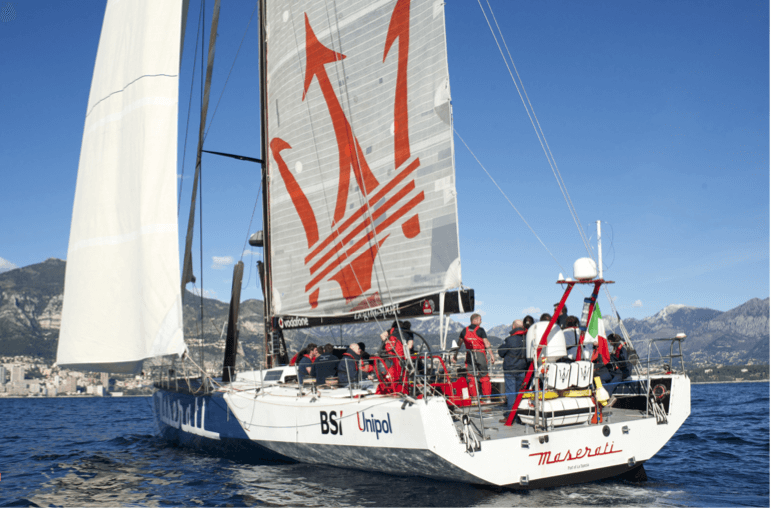

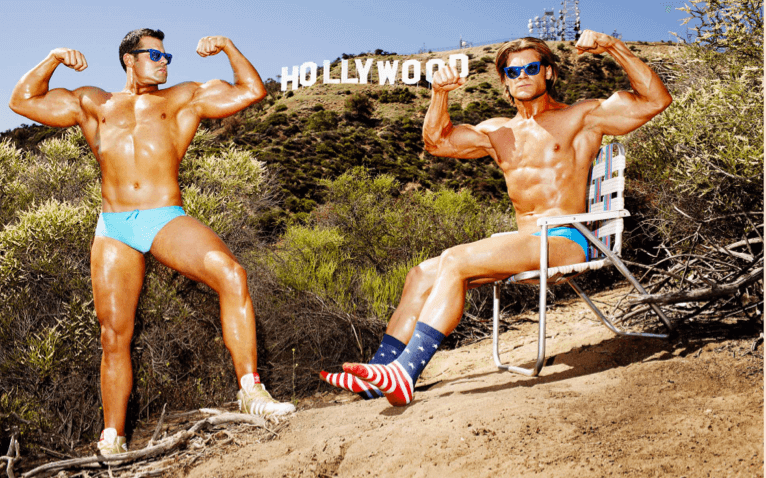


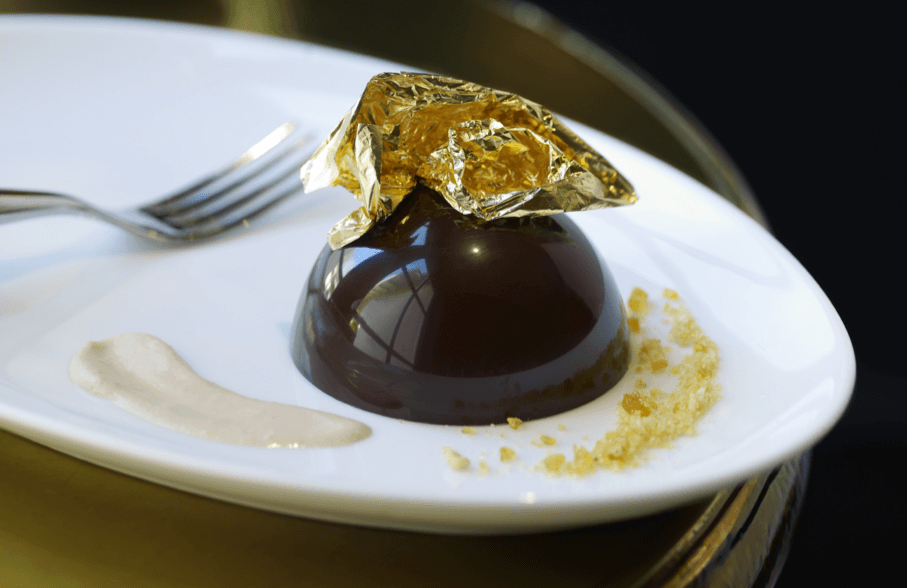


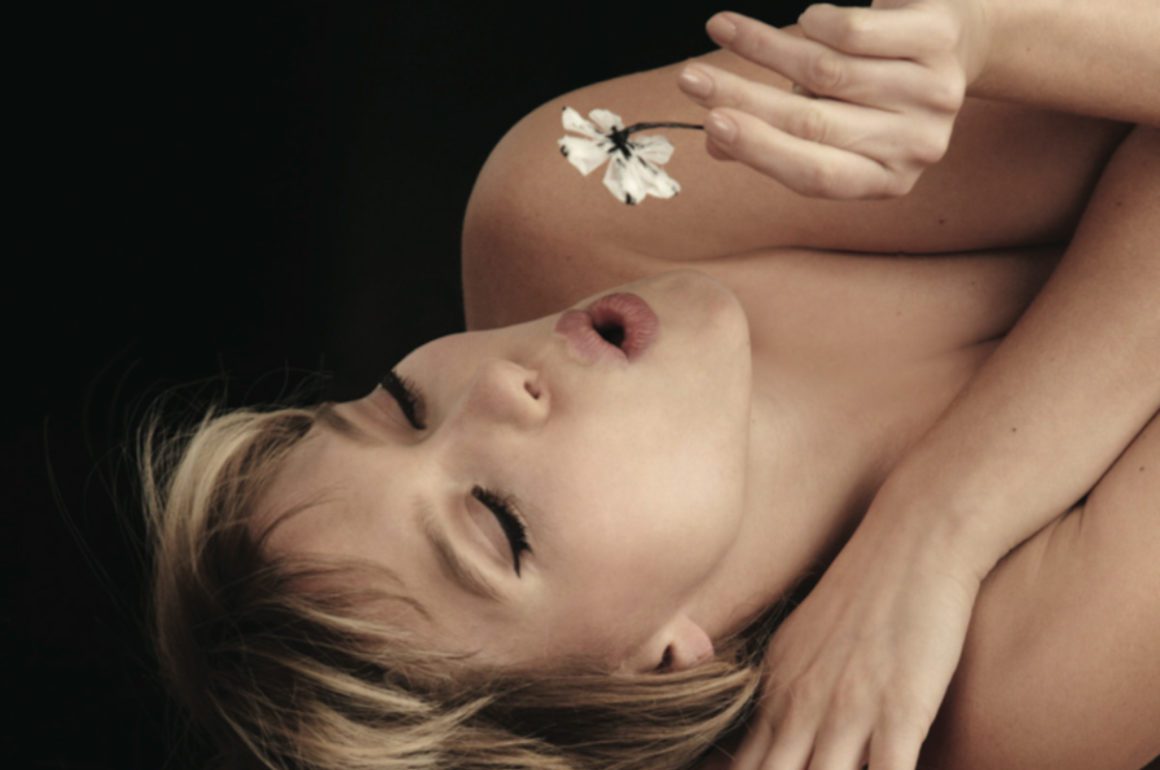

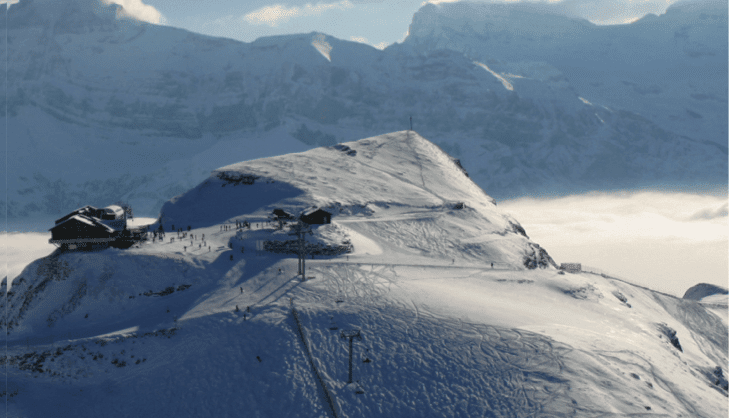

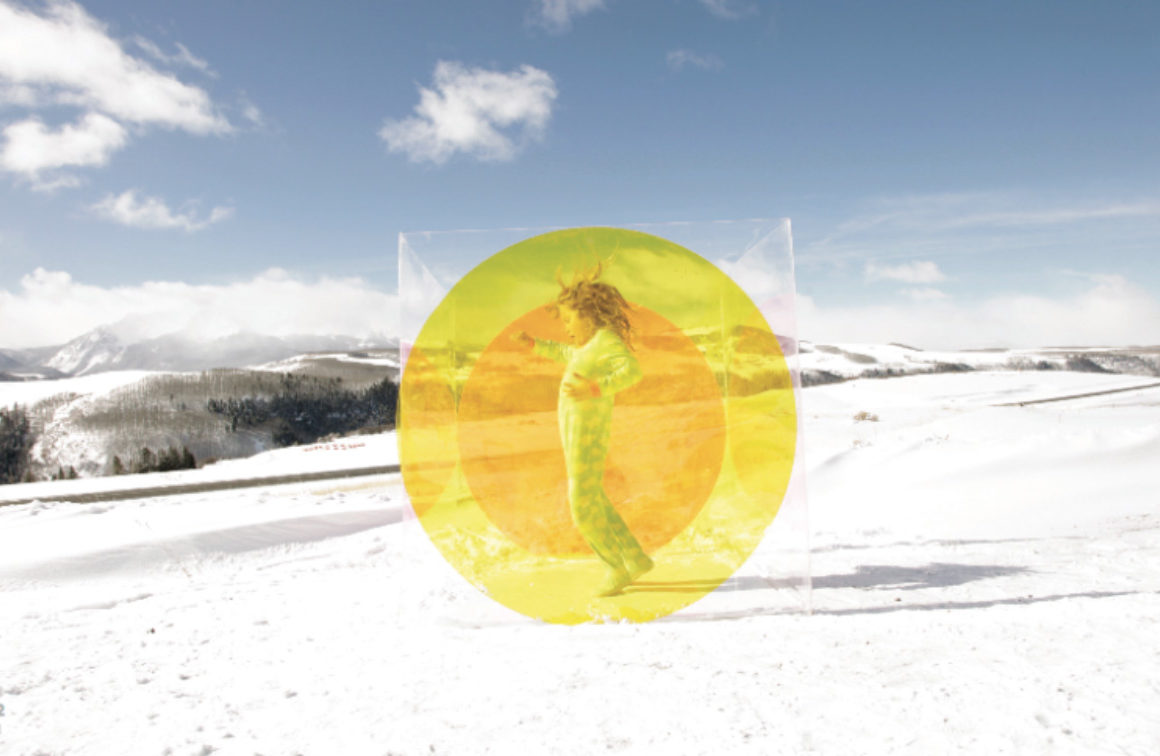

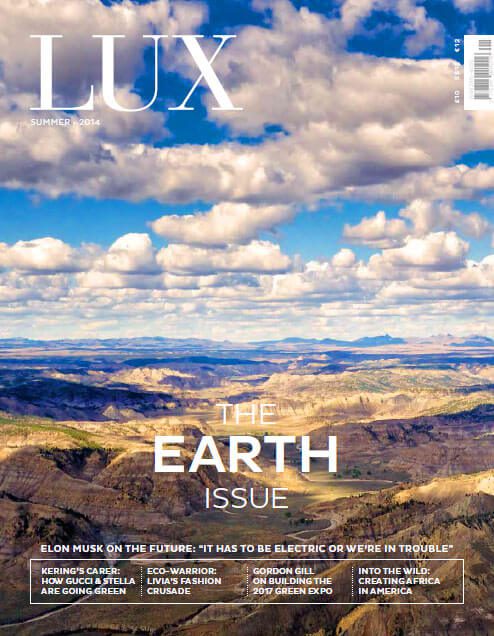
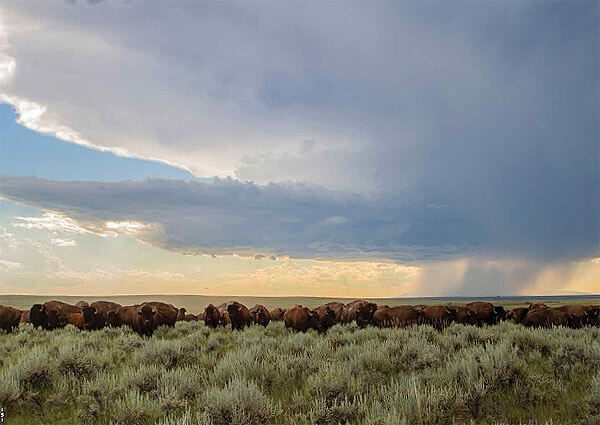










Recent Comments